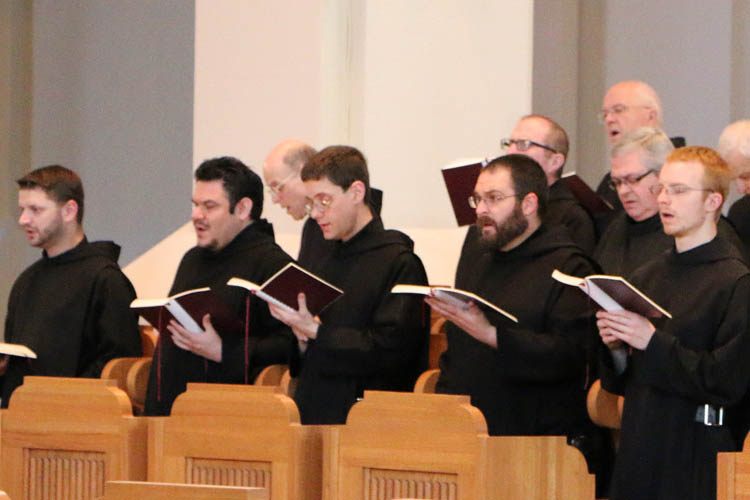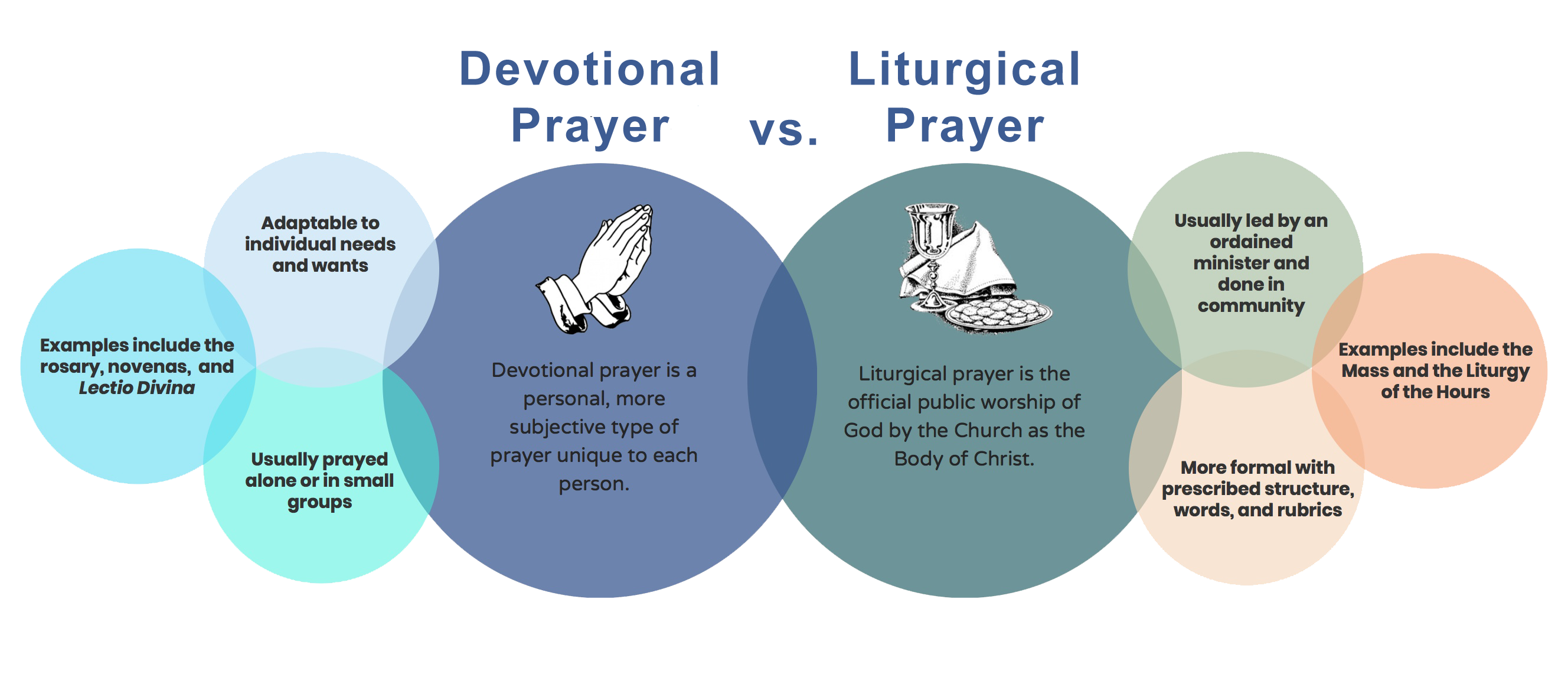
Devotional Prayer and Liturgical Prayer
How devotional prayer and liturgical prayer work together in our spiritual lives
 One of our oblates, who is also an Evangelical Christian, described to me his first experience of praying with the monks at Conception Abbey. It was at Evening Prayer, and he commented that right away he knew it was an experience of something that was missing from his prayer life, but also which complemented it; it was part of the reason that he has become an oblate. What he was referring to has a name – we call it liturgical prayer. It differs from what we call devotional prayer. What is the difference between the two? After all, isn’t prayer just the lifting of the mind and heart to God? Does it matter how one prays as long as one’s prayer is sincere?
One of our oblates, who is also an Evangelical Christian, described to me his first experience of praying with the monks at Conception Abbey. It was at Evening Prayer, and he commented that right away he knew it was an experience of something that was missing from his prayer life, but also which complemented it; it was part of the reason that he has become an oblate. What he was referring to has a name – we call it liturgical prayer. It differs from what we call devotional prayer. What is the difference between the two? After all, isn’t prayer just the lifting of the mind and heart to God? Does it matter how one prays as long as one’s prayer is sincere?
Devotional prayer is a more subjective, personal kind of prayer. Particular practices of devotional prayer rise and disappear according to the historical situations of the times. They are adaptable to individual needs and wants. St. John Paul II described them as “an opportunity for the faithful to encounter the living Christ” (Rosarium virginis Mariae, 43). It is meant to help sustain each of us on our spiritual journey, especially in our quest to pray constantly under the advice of St. Paul (I Thessalonians 5:17). It is also something we can do on our own which allows us to individually hear God telling us that He loves us, and at the same time allows us to show our love for God. Practices like the Rosary, Eucharistic Adoration, Lectio Divina, novenas, veneration of Mary and the saints, praying in tongues or being slain in the Spirit, and a wide multitude of other practices are included in this category.
Liturgical prayer, on the other hand, is the official public worship of God by the Church as the Body of Christ. It tends to be more formal, with prescribed structure, rubrics, and words, and usually led by an ordained minister. The Eucharist and the Liturgy of the Hours are the most common examples of this sort of prayer. The documents of Vatican II speak of the Eucharist as “the summit toward which the activity of the Church is directed” and “the font from which all her power flows,” (Sacrosanctum concilium, 10). Liturgical prayer is meant to unite the various parts of the Body of Christ into one body, with Christ, our High Priest at the head, represented by the deacon, priest, or bishop, leading us together to the Father. Because of the diversity of the members of the Body of Christ, liturgical prayer is more structured, with texts chosen from the rich history, scripture, and tradition of the Church, and focuses on the Paschal Mystery. In liturgical prayer, the royal priesthood of the baptized faithful is practiced as they offer the sacrifice of the Mass. There is not, however, much room for insertion of personal preferences or prayers. The liturgical prayer unites and transforms us – it changes us, we don’t change it. It belongs to the whole Church, not to any one of us. It is the prayer to the Father by Christ, our High Priest who invites us to join into the life of the Trinity. Each liturgical celebration has a sacredness that surpasses anything else, so it is unmatched and irreplaceable (SC, 7).

Liturgical prayer and devotional prayer are meant to work together to lift our minds and hearts to God. Devotional prayer allows us to develop our personal relationship with the Lord according to the way that best suits each of us. That is why the type of devotional prayer one chooses is more subjective; even the manner of praying the same prayer may vary from one person to the next. Having established a relationship with the Lord in our devotional prayer life, we bring that to liturgical prayer, where it is united with the others in the Church and incorporated into the Paschal Mystery. In the seminary college, our students come with various devotional practices they have learned in their parishes and home life. In our role of forming them to be diocesan priests, we introduce many of them to the Liturgy of the Hours and daily Eucharist, while encouraging the various devotions with which they come. At the same time, we have found that Lectio Divina, the prayerful reading of scripture, is an effective devotional practice to help students adapt to the heavy dose of scripture found in the Church’s liturgical prayer. Since the practice of Lectio is tied so closely to encountering Christ in scripture, it dovetails well into liturgical prayer and fuels their devotional prayer. This experience is most rewarding. We do not ask them to give up their devotional life, but to choose devotions which are useful in furthering their relation to the Lord, so that they can learn to experience the complementarity of the two types of prayer. Then both will form the foundation of a strong spiritual life.
I hope that our oblates and all Christians find that through the practice of Lectio Divina and the Church’s liturgical prayer, especially the Liturgy of the Hours, they will achieve the same sort of familiarity and affection for both types of prayer. Ultimately, between the two types of prayer, we learn to “pray constantly,” to lift our minds and hearts to God at all times, as we walk together to our heavenly home. This is a difficult expectation, at least at first, but it gets better with practice. As we monks tell our novices: stick with it, it is worth the effort!
This article was written by Fr. Albert Bruecken, OSB and originally appeared in the Spring 2017 issue of Tower Topics.
Posted in General, Listen, My Son
